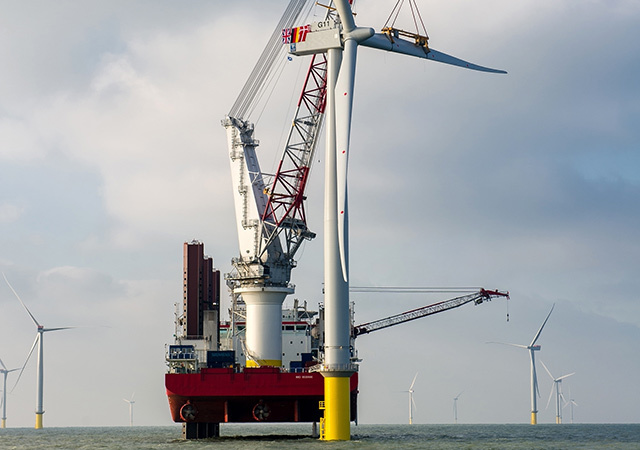
Analysts at Douglas-Westwood have been tracking new generation UK renewables since their genesis in the 1990s. Aberdeen-based manager Frank Wright delivers his take on the industry and where it might be heading.
The low-carbon drive and the need to replace older power plants mean that the UK desperately requires new generation capacity from a variety of sources including offshore wind.
At the same time, it is clear that costs in these emerging sectors are extremely high, and the benefits to UK plc have thus far been lower than expected.
The increasing focus on renewable energy has placed the sector firmly in the political firing line. For example, the political party UKIP which was so successful in recent English local elections promises to scrap all subsidies for renewable energy and cancel all windfarm developments.
This type of sentiment seems to strike a chord with the views of the British public currently suffering under the weight of rising energy costs.
As a consequence, the high costs, particularly in offshore wind, are a major area of concern. At the present time, the cost of energy for offshore wind is significantly higher than for conventional thermal plant (gas and coal), plus onshore wind. While comparing an intermittent renewable technology with conventional thermal generation may seem unfair, the reality is that an investor may be required to make this comparison.
To understand the cost of energy challenge, one must look at its major components including the initial capital outlay (CAPEX), and the ongoing cost (OPEX) of maintaining the asset.
The general CAPEX trend has been upward over the past several years although there is some evidence that costs are starting to plateau.
OPEX levels are harder to judge due to limited real-world experience. However, what is clear is that a series of major issues have been experienced such as poorly manufactured foundations, and defective wind turbine blades.
Due to high cost levels, offshore wind requires financial support, often referred to as subsidies. The previous UK government created a complex system of green certificates in order to incentivise development, which eventually led to investments on a truly massive scale such as the recently completed London Array consisting of 175 wind turbines, and costing upwards of £1.8billion.
Financial support is clearly important and remains a key issue due to the government’s decision to undertake structural reforms of the energy market. The new system hinges on what is known as the “strike price”, a guaranteed minimum price at which electricity from offshore wind would be sold.
Developers argue that a strike price set too low will make many of their future projects economically unviable, while critics argue that a price set too high would leave the UK government with a crippling liability over what could amount to a 35-year period.
Uncertainty over these reforms has led to a definite hiatus in activity at a critical juncture for the nascent industry.
Over the next five years, UK offshore wind was poised to move into the “Round Three” full industrialisation phase, with projects of an even greater scale than what has gone before.
Delaying this phase will impact adversely on the supply chain, which is expected to build massive amounts of new manufacturing capacity, and would also hobble a critical component of the UK’s energy rebalancing strategy.
Another rationale for the low carbon shift is the creation of a new industrial sector and accompanying green jobs. To date, UK Plc has been successful in the area of professional services, a traditional area of strength.
However, while these services represent a meaningful proportion of expenditure, the majority of the value is accounted for by the wind turbines, other balance of plant items such as the foundations and cabling, and installation services.
Outside of wind turbine manufacturing – dominated by German and Danish companies – there have been some contract wins related to supply of foundations, cabling, and offshore substations. These contract awards have been intermittent, and have failed to create the momentum required to justify sustained investment by the domestic supply chain.
An oft-mentioned goal of governments, north and south of the border is to attract a major wind turbine manufacturer into the UK. A fact often overlooked is that a wind turbine is a complex system of components including bearings, castings, forgings, and composite structures.
Sadly, the specialised skills required to produce these components are in short supply in the UK with existing manufacturing capacity tending to cater to more established sectors such as oil and gas.
To conclude, it is clear that the UK requires new power generation capacity in the short to mid-term with sectors such as nuclear and onshore wind also constrained by similar factors.
Therefore it will be imperative for the current London government to get its market reforms right first time to avoid future energy supply issues, which would be economically and politically disastrous.
